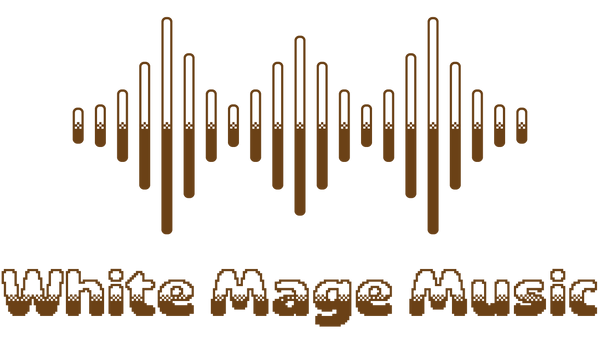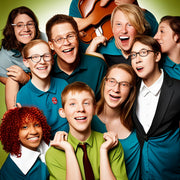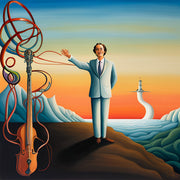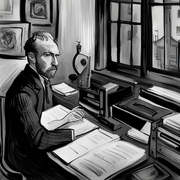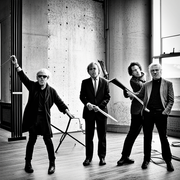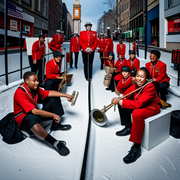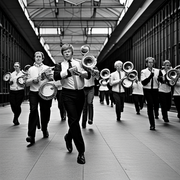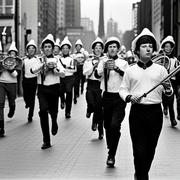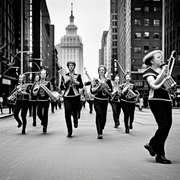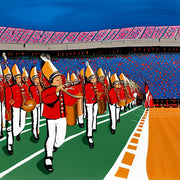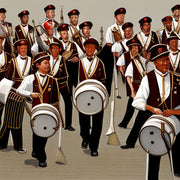There's a great clearing house that provides quick, simple, and easy access to getting rights granted quickly and knowing your costs right away. However, that access comes at a premium, and that's where bands face a greatly increased budget. Thankfully - there is an alternative.
My first check is ASCAP (the American Society of Composers, Authors, and Publishers). Anecdotally, I've found that ASCAP tends to have a larger database than the "other" rights organization, BMI (information listed below). How do you know which one an artist is registered with and thus which one to check? You really don't. But the process to do the search only takes a few seconds for each.
The "ACE" (ASCAP Clearance Express) Repertory database gives any individual the ability to search for a work title, artist, or composer that's registered with ASCAP. The search results will return who owns the copyright and what their contact information is.
Just now, I went into the ACE Database to search for John Cage's 4'33" (I recall seeing a social media post lampooning the cost to get rights for this performance-art piece via clearing house). ASCAP was able to return the copyright owner and their contact information:


This is where you'll have to invest a little more legwork than the simplicity of the clearinghouse database (just remember, for each work you take these steps, you're saving about $150 in your budget).
From the ASCAP information, you'll (most likely) get an email address and a phone number. I highly recommend picking up the phone. I made a phone call, a real human answered the phone after a couple rings, and at the end of a 2-minute conversation, I had all the information I needed that resulted in a relatively inexpensive copyright fee, whereas the clearinghouse website said rights for the piece were not available.
If you don't get a phone number available, use the email address. Even if it looks like a generic/impersonal inbox address, give it a shot. I did this for another work and got a reply from a real human within a couple hours.
If you don't have an email address or phone number - head over to the publisher's website. You'll need to do a little bit of looking around here (remember - your couple minutes of looking is going to save you $150+).
Using my "Hello" example above, I just Googled "EMI Blackwood Music" and found they're owned by Sony/ATV. Going to Sony/ATV's website, I looked around for things like "copyright clearance" or "permissions" or something along those lines. Not seeing any dedicated page, I went to their "Contact" page and found their email address (info@sonyatv.com). Merely from experience, I know that for Sony/ATV, sending an email to this address will get you the results that you need.
Each publisher will do it differently, so you'll need to look around. Use a little logic and you'll be okay! You're after permission to create an arrangement of the work - not just a license to use an existing recording of the work.
Again, each publisher will have their own subtle variations on this process. They'll ask for basic contact information, and there will be a manual process of sending documents and contracts back and forth. If you're on a Mac computer, you can import your signature into Preview to easily append it to a document without needing a printer or scanner. On Windows, Acrobat offers a "fill & sign" function.
Pay attention to all the steps each publisher asks for along the way. Some may ask for copies of your arrangements for their own files. Some may ask for administrator signatures. Each will be a little different - just stay patient and respect their processes (remember - you're saving $150+).
Technically, as the band director, this isn't your responsibility - but be mindful of these steps.
There are three facets to copyright permission: permission to arrange (create the chart for your band), performance royalties (artists collect a royalty for public performances of their works), and mechanical and synchronization rights (mechanical rights is to have permission to make an audio recording; synchronization rights give you permission to make a video).
The steps outlined above are to secure copyright permission.
Performance royalties are the responsibility of the organization that is hosting your performance event (your competitive circuit, the state band directors' association, etc.). Most of these organizations require that you submit proof of copyright clearance - it's from these documents that they're able to take care of their responsibility with performance royalties.
Mechanical and Sync rights are the responsibility of whatever company is creating the recordings of your performances. Again, this information is generally shared between the hosting/sponsoring organization and their contract with that company.
There have been cases where a piece of music is excluded from the final audio or video recording. This isn't an indicator the ensemble failed to get copyright clearance; it's a matter that the recording company was unable to secure mechanical or synchronization rights with the copyright holder.
Best of luck!
